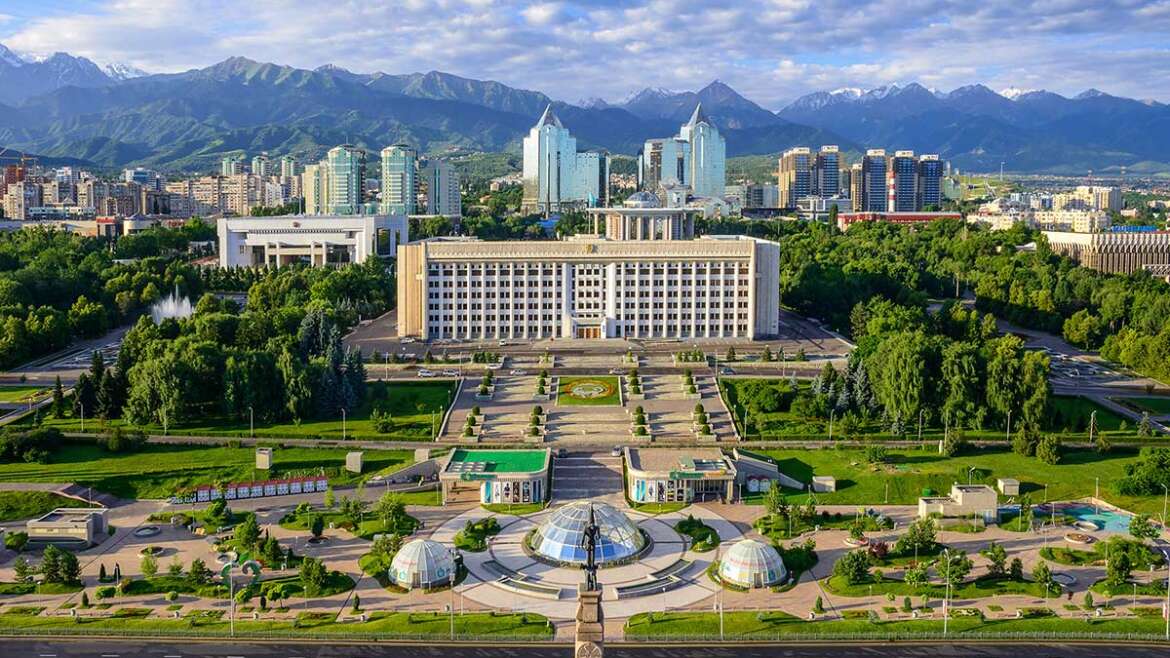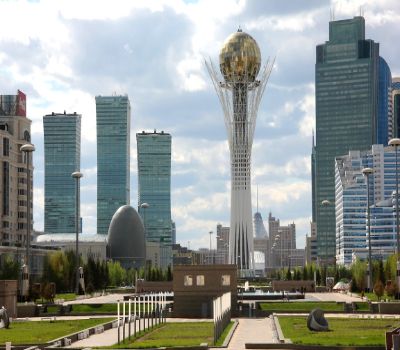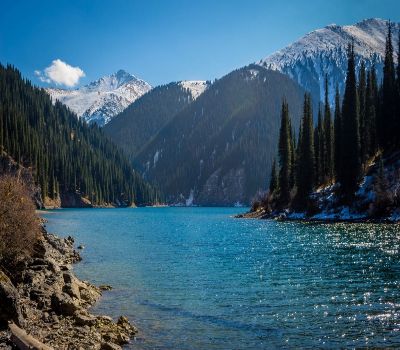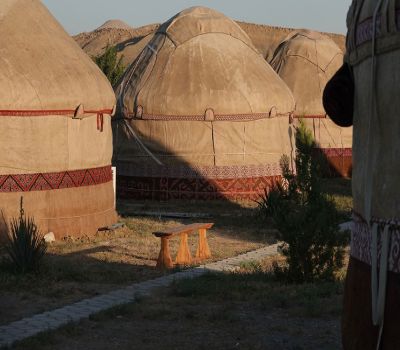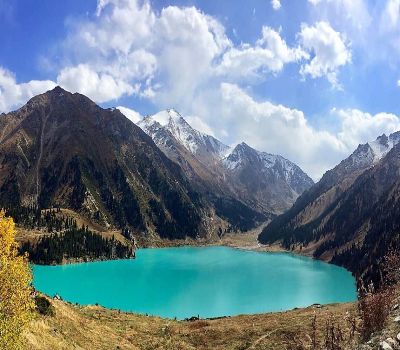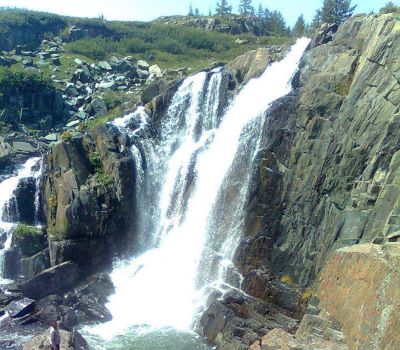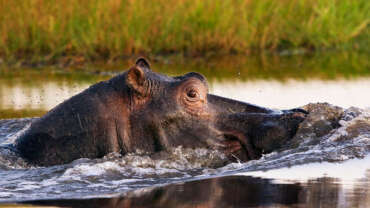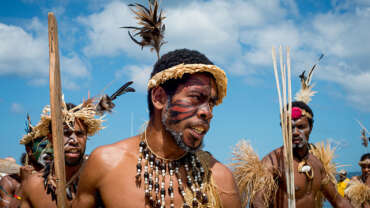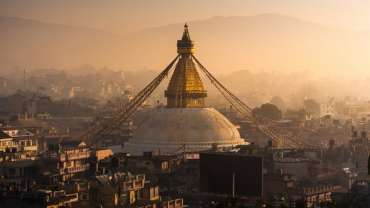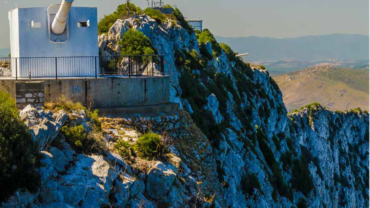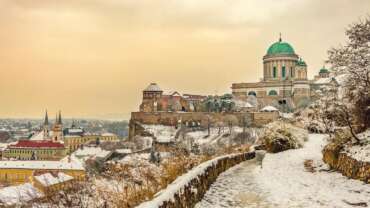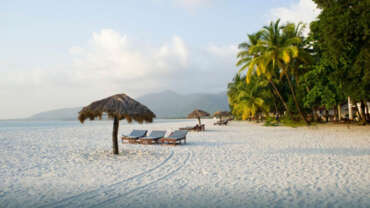Kazakhstan - Very Nice
Kazakhstan, a Central Asian country and former Soviet republic, extends from the Caspian Sea in the west to the Altai Mountains at its eastern border with China and Russia. Its largest metropolis, Almaty, is a long-standing trading hub whose landmarks include Ascension Cathedral, a tsarist-era Russian Orthodox church, and the Central State Museum of Kazakhstan, displaying thousands of Kazakh artifacts.
We welcome you to discover four facets of Kazakhstan’s tourism – the 4 E’s: Eco, Ethnic, Entertainment and Events. Experience untouched nature and magnificent landscapes, unwind in authentic nomadic culture and gastronomy, try numerous entertainment options and enjoy vibrant festival and events of Kazakhstan”.
Three pillar cities in Kazakhstan to start your journey with: Nur-Sultan, Almaty and Shymkent to get a better understanding of Kazakhstan.
Industrial tourism
Industrial tourism focuses on exploring industrial sites that have been abandoned, are still functioning or are under construction. Any person, even an ardent admirer of natural landscapes, will be stunned by powerful facilities, for they have that awe-inspiring allure.
The Semipalatinsk Test Site is a must-see destination for fans of industrial tourism. In the 20th century, the first nuclear tests in the Soviet Union were conducted near the town of Semipalatinsk. For 40 years weapons of mass destruction have been tested there. In 1991, the Semipalatinsk Polygon was closed and now it has become a tourist site. It is advised to visit it only with a tour, so the guides can take all safety measures.
Also, Bogatyr Coal Mine in Ekibastuz, which entered the Guinness Book of Records as the largest in the world, should also be included in the list of must-visit industrial sites. However, there are still many amazing places that you should definitely visit if the usual outdoor recreation does not thrill you anymore.
History of Kazakhstan
Ancient History
Millions of years ago people began to develop fertile land rich in wild animals in the territory of the modern Kazakhstan. First ancestors of Homo sapiens – Pithecanthropus and Neanderthal are known to have settled in the mountains of Karatau (Zhambyl region) and Mangystau and northern Balkhash. Moreover, it is confirmed by archeologists that tribes in northwest Kazakhstan domesticated camel, wild shepherd dog, mountain sheep, mastered the horse breeding, learned to make various items from copper, stone, bone and clay as early as in IV-III millennium BC.
In the Bronze Age (XVII -VIII century BC) tribes living on the territory of Kazakhstan practiced cattle breeding, agriculture and metallurgy, lived in large villages, surrounded by walls and moats (the prototype of the cities), and were famous for their brave warriors.
Later, the territory was settled by Sakas (Scythians). These tribes were nomadic and semi-nomadic, some of them practiced agriculture (in the valleys of the rivers Syrdarya, Shu and Talas). Sakas were famous for being excellent horsemen. They are among the first to have mastered the technique of shooting a bow at full gallop. In addition, Sakas had their own written language, mythology and engaged art. The style in which Saka painters and jewelers created their works, subsequently were named “animal style” by historians.
Empress Tomyris is one of the most famous Saka rulers, who fought against Persian invaders, namely Cyrus the Great, subsequently winning his army and executing him.
A Saka warrior, clothes of which were covered with golden sheets, was first found in Esik mound by archeologists along with 4000 golden ornaments and was called Altyn Adam or the Golden Man. Later, three more of similar burials were discovered.
In the II century BC, the Xiongnu Empire, the lands of which stretched from Manchuria in the east to the Pamir mountains in the west started to split and one of its parts moved to the Kazakhstan territory, thus influencing the population, lifestyle, etc.
History of the I millennium
In the middle of the I-st millennium the ancient Turkic tribal union started to be formed on the expanse of the Mongolian mountains to the Caspian Sea, which ultimately lead to the emergence of statehood.
In 551, the first turkic state formed in this region, known as Turkic Khanate. This fact contributed to the development of crafts and trade. Formation of the Turkic khanate had a positive impact on the functioning of the Asia-Europe trade route, historians now refer to as the Great Silk Road, as well as the construction of the first cities in the steppes, such as Chirik-Rabat, Otrar, Syganak, Ispijab, Taraz and Balasagun. The cities were located along the flow of the rivers and were important locations of the Silk Road.
During this period many turkic states were replacing each other one after another: Turgesh, Karluk, Karakhanid, Kipshak, Oguz, etc. Also, Arabs introduced the Islamic religion to the turkic tribes, as well as the inherent model of writing. Over time, the Arabic script is almost completely replaced the traditional ancient Turkic runic script.
Golden Horde
In 1218 Genghis Khan’s troops invaded the territory of Kazakhstan and destroyed the cities like Otrar, Syganak, Ashnas, etc. At first nomads provided fierce resistance, but then many nations lay down their arms voluntarily or forcibly and joined the Genghis Khan army.
After the death of Genghis Khan, the Mongol Empire was divided into several independent states.
Eastern Dasht-i-Kipchak (the territyro of Kazakhstan), part of the territory of Khorezm and Western Siberia became part of the Golden Horde – the state created by Batu (grandson of Genghis Khan). The vast majority of the Horde was representatives of the Turkic tribes, such as the Kipchak, Kangly, Naiman, and Kerayit Konyrat.
Fateful year for the rulers of the Golden Horde was in 1391. This year, Tamerlane, also known as “iron Timur”, defeated the army of the Horde, and the once mighty state split into two parts: the western – the Ak-Orda and eastern – Kok-Orda. The latter, in turn, was divided into two wings: Nogai Horde and the Uzbek Khanate.
Kazakh Khanate
Tired from the tough policy of the Uzbek Khanate, Janibek and Kerey sultans left Syrdarya steppes with their auls in 1460. They moved to Zhetisu (Almaty region) where in 1465 created Kazakh Khanate and started to expand their boundaries after the death of Uzbek Khanate’s khan, which over time reached the territory from Irtysh to Zhaik rivers.
During the reign of Tauke Khan, Zhety Zhargy the code of laws of the Kazakh Khanate was adopted. Prominent public figures, scientists and thinkers – Tole bi, bi and Kazybek Aiteke bi participated in its preparation.
In the XVIII century, Kazakh Khanate was weakened under the onslaught of Jungars, but retained its territorial division into three Juz – Senior, Middle and Younger. Despite the military power of the enemy, in separate battles Kazakh soldiers were able to inflict considerable damage to Junggar army. However, understanding that without support from the outside, fighting the invaders was more and more difficult every year, Khan Abulhair of the Younger Juz in 1730 addressed the Russian Empress Anna Ivanovna with a proposal to establish a military alliance against Jungars. But the Empress did not support this initiative, offering to answer protectorate from Russia. Unlike the Younger Juz, the process of joining the Senior and Middle Juzes to Russian Empire, stretched for many years.
Along with the positive moments, resulting from joing Russian Empire, e.g. solving security issues, and receiving investments for constructing roads and factories, there also were negative consequences, such as changing the life of Kazakh nomadic tribes, losing much of their best pastures and elimination of Khan ruling. These and other negative changes caused discontent in the Kazakh society, which subsequently resulted in the people’s liberation uprising. The most famous of them were the Peasant’s War, or Pugachev rebellion (1773 -1775), the anti-feudal and anti-colonial movement of the Kazakhs Younger Juz under the leadership of Syrym Datuly (1783 – 1797), the uprising of the poor in Western Kazakhstan lead by Isatai Taimanuly and Makhambet Utemisuly (1836 – 1838), etc.
Kazakhstan during Soviet Period
After the October Revolution, setting up of the Soviet authority in Kazakhstan completed in March 1918. The capital of Kazakh Autonomous Social Soviet Republic was Kyzylorda, and later was moved to Almaty.
In the late 30s the process of industrialization began in the country, which allowed Kazakhstan to become one of the largest industrial regions of the USSR. Over time, Kazakhstan has become a major supplier of zinc, titanium, magnesium, tin, phosphorus, chromium, silver and molybdenum for the needs of the defense industry and technical SSSR. However, harsh policy of the Soviet rulers has led to the reduction of population due to famine in 1930s, mass repression, etc.
With the beginning of Nazi aggression, over 400 factories from the European part of the country were evacuated into Kazakhstan. There were built new cities and workers’ settlements, factories and mines. During the WWII 500 Kazakhs became Heroes of the Soviet Union and four of them (Talgat Begeldinov, Leonid Beda, Ivan Pavlov and Sergey Lugansky) were twice awarded Hero of the Soviet Union.
In 1955 the construction of the military polygon of Baikonur for ballistic missile tests began in Kazakhstan. Subsequently, it has become the main spaceport of the planet. After more than half a century, Baikonur remains one of the leading space centers, annually carrying out dozens of manned rocket launches.
In addition, in the post-war years in Kazakhstan the largest polygon in the world was built near the town of Semipalatinsk (Semey), designed to test the latest models of nuclear and atomic weapons. The experiments have caused significant harm to the ecosystem of the Semipalatinsk region. Therefore, in 1989, activists of the anti-nuclear movement “Nevada – Semipalatinsk demanded the elimination of the polygon and succeeded.
One more important event in the modern history of Kazakhstan, is a large-scale agricultural campaign designed at developing of virgin and fallow lands. During the virgin lands development years, tons of grain was produced in Kazakhstan. As a result of the republic became one of the largest grain producers in the world.
Independent Kazakhstan
After the collapse of the USSR, Kazakhstan declared its independence. This historical event took place on December 16, 1991, the first countries to recognize the independence of the newly proclaimed republic, were Turkey, the United States and China.
2 January 1992 Kazakhstan became a member of the OSCE. In the same year the republic was adopted in the United Nations.
15 November 1993 Kazakhstan introduced its national currency – tenge.
20 October 1997 – the capital of Kazakhstan was moved from Almaty to Astana (then called Akmola).
Kazakh Traditions
Kazakhs have always revered and highly valued their national customs and traditions. It is almost impossible to describe all the traditions followed by Kazakh people in one article, thus a brief introduction to Kazakh beliefs and customs is given below.
The main tradition of Kazakhs, which eventually transformed into a feature of national character, is hospitality. In the Kazakh society, there is an unofficial law voiced in ancient times, which says “Meet a guest as the God’s messenger”.
Hospitality is considered a sacred duty in the Kazakh society. At all times, the steppe inhabitants did their best to please their guest. Therefore, each traveller knew that he or she would be welcomed anywhere in the Kazakh land.
Respect for the elderly is another positive feature of Kazakhs. Traditionally, a child from early childhood is taught to be moderate and honest when dealing with older, wiser and life experienced people.
However, the above mentioned national identities that served as a basis for the occurrence of generalized rules and principles of public relations (tradition), fortunately, are confined not only to representatives of the Kazakh people. Therefore, we offer to your attention a list of basic and authentic customs, which are widespread in the Kazakh society.
1. Traditions and customs associated with the guest reception
Travellers in Kazakhstan are most likely to be encountered with the traditions, associated with guest reception. Here are some examples of them:
Konakasy – a custom associated with treating of a guest. As mentioned above, Kazakh people since ancient times have been famous for their hospitality. Kazakhs always reserve the tastiest food for guests. Guests are divided into three types: “arnayy konak” is a specially invited guest, “kudayy konak” – a random stranger (uninvited), “kydyrma konak” – an unexpected guest. All these guests, despite of their type are offered a rich table – Konakasy.
Konakkade – a tradition under which a host has a right to ask a guest to sing a song or play a musical instrument (of course, as long as a guest is known for his or her talent), thus ensuring some fun and joy during the feast.
Erulik – if new settlers came to a village erulik was arranged in their honour, i.e. a small celebration that allowed newcomers to quickly adapt to the new location. Also, the custom erulik includes assistance in settling of the newcomers, when neighbours provide them with firewood, drinking water, etc. for the time being.
Toy dastarkhan – a special form of celebration, organized for holiday or during it. Sports competitions, music, singing competitions (aitys) and horse riding competitions are organised in addition to the gatherings during Toy dastarkhan. Very often, dishes of Kazakh national cuisine are served during such occasions.
2. Traditions and customs associated with gift giving
Guests are very often have to receive or give presents; in addition, there are often times, when gifts should be given in some special occasions according to the traditions. Some examples are given below:
Suyіnshі – a custom according to which a traveller or any other person who brought home a good message (news) receives a valuable gift from the owners in gratitude. Sometimes before telling good news a person says ‘Suyunshi’ or ‘what would you give me for a Suyinshi?’, thus implying that he or she has something great to tell.
“At mingizip shapan zhabu” is a high honour. According to the tradition, a respected visitor, who may be a poet (akin), a hero, warrior (batir) or other very respected man receives a gift from local residents: a horse and a splendid shapan (robe of camel’s hair with a cotton lining) in recognition of their merit.
Baygazy – a tradition of giving a gift to a person, who acquired a new valuable thing.
3. Traditions and customs associated with mutual aid
Helping each other has always been highly valued by Kazakhs and is very important in a Kazakh community. Therefore, there are a number of traditions, which are associated with mutual aid. Some of them are listed below:
Asar – a family, which has to perform an urgent and sometimes a hard work, has a right to ask relatives, friends and neighbours for assistance. At the end of the work, a rich table is laid as a gratitude for those, who helped.
Zhylu – a tradition associated with the provision of material, moral and financial assistance to people affected by natural disasters (fire, flood, etc.). All supporters, not only relatives are entitled to help the victims. Many things can be given as donations – livestock, building materials, clothing, money, etc.
Belkoterer – a tradition to treat the elderly. Delicious and most importantly – soft foods such as kazy, zhent, cottage cheese are cooked for the elderly. Typically, this responsibility rests on children or close relatives, the less likely neighbours. Belkoterer tradition is an example of caring for the elderly.
4. Traditions and customs associated with birth and upbringing of the child
Traditions, connected with the birth of children and their upbringing, apparently play a very important role in many cultures. Just a brief description of such rituals and traditions followed by Kazakh families, is given below. All of these rituals are usually followed by celebrations.
Shіldehana – a celebration that is associated with childbirth.
Besіkke salu, besik toy – a holiday, hosted when the newborn is put to a cradle – besik. As a rule, it is organized on the 3rd-5th day after dropout of umbilical cord of the kid.
Kyrkynan shygaru – a ritual performed on the fortieth day after birth that includes bathing baby in 40 tablespoons of water, and the first haircut and nail cut and other rituals.
Tusau kesu – a day when the baby took his first steps the oldest and most respected people is invited to perform a ceremony of Tusau keser. Then he or she should cut the special ropes, beset baby’s legs, in order to ensure that in future the kid could walk nicely and run fast.
Sundetke otyrgyzu is a rite of circumcision. The ceremony is held when a boy is 5-7 years old. A big festival to which all the relatives and friends are invited is organized after this. On the occasion of Sundetke otyrgyzu guests usually make generous gifts to the hero of the occasion and his parents.
5. Traditions and customs related to marriage
One of unique Kazakh traditions related to marriages is that the marriage between relatives up to the seventh generation is prohibited. Such taboo helps to prevent blood mixing and, consequently, benefit to the health of future offspring.
Traditionally, sequence of the ceremonies and rituals related to a marriage is the following.
Any wedding ceremony in the Kazakh society is anticipated by kudalyk (matchmaking). Before the wedding, matchmakers come to bride’s house. Their task is to agree with the closest relatives of a girl on her marriage. During courtship, father of the bride receives gifts from the guests that serve as a deposit.
If negotiations are successful, the father, in turn, presents a coat to the main matchmaker. This custom is called “Shege Sapa”. Preparation of “kuyruk bauyr” – a delicious dish from the liver and broad tail fat also testifies to the successful completion of courtship.
The next stage of the ceremony is sendoff of the bride Kyz uzatu. In the evening before the Kyz uzatu matchmakers come to the bride’s house again. Number of visitors should not be even (5-7). Early in the morning, the bride with matchmakers is sent to the groom’s house.
Solemn ceremony of meeting the bride in the groom’s house is called kelіn tusіru. The main element of kelіn tүsіru is a traditional performance of a song of instructions and wishes – Betashar.
In ancient times when the Kazakhs practiced a nomadic lifestyle, dwelling (yurt) of newlyweds was located behind the house of groom’s parents. According to the tradition, the first threshold of the yurt was to be crossed by the bride, and be sure to do it with the right foot. Also during the wedding ceremony, the couple must drink together a bowl of water with dissolved sugar and salt. This ritual is considered as a guarantor of a happy family life.
6. The most ancient traditions of Kazakh people
Ashamayga mingizu is a ritual whereby a 6-7-years-old boy was supposed to be given a horse and whip. Such a ritual is a kind of “initiation”, having proclaimed that the child is a jigit. On this day, elders blessed the young rider and parents organized a small celebration in honour of their son.
Bastangy is an ancient analog of contemporary youth parties. Traditionally, these celebrations are conducted immediately after departure of adults. During Bastangy, guests express only one wish that the travel of the adults would be accompanied by luck.
Kazakh Language and Literature
Kazakh language
Kazakh culture is also represented in Kazakh language and literature.
Kazakh is a Turkic language and is similar to other Turkic languages, such as Ozbek, Kyrgyz, Turkish, etc. It is agglutinative language with a vowel harmony, like other Turkic languages.
Kazakh is written using Cyrillic alphabet, though Kazakhs, living in China still use Arabic-derived alphabet as 100 years ago. Kazakh was also written in Latin alphabet in 1920s, thus being changed several times in XX century. Nowadays a switch to Latin alphabet is being discussed.
Russian is also widely used in Kazakhstan and is spoken almost everywhere.
Kazakh literature
Kazakh language is very poetic and rich in metaphors, which are used not only in poems and novels, but also in everyday language of people.
Highly poetic nature of Kazakh language has been perfect for the development of Kazakh poetry from ancient times.
Easy to remember Kazakh poetry was delivered from ‘father to son’ from centuries to centuries, sometimes slightly modified, sometimes with creation of completely different variants, with happier ending than in the original, etc…
One of the examples of such folklore are epic poems and love poems. These are true stories of love and braveness of heroes, in the form of long poems, which generally reflect history of Kazakh people. Many of them are based on true stories: e.g. a mausoleum of Kozy Korpesh and Bayan Sulu (Kazakh Romeo and Juliette) in East Kazakhstan is a monument to their eternal love and a proof of their beautiful love story.
XIX-XX centuries were probably the period, when the most beautiful poems and novels were created by Abay Kunanbayuly, Magzhan Zhumabayuly, Zhusipbek Aymautuly, Shakerim Kudayberdiuly, and many others.
Abay Kunanbayuly (1845-1904) is a Kazakh poet, writer, composer, philosopher and translator. Abay’s creations open a new stage of Kazakh realistic literature. Main topics of his works are the call to goodness, knowledge, culture, honest labour, justice, love for people and native land. The winter residence of Abay in East Kazakhstan region is now a museum and is visited by many tourists every year.
Prose, or novels emerged as a new kind of word art in the beginning of XX century, with the emergence of written literature. The first novel in Kazakh is considered Unhappy Zhamal by Mirzhakyp Dulatuly.
Political situation of the period, culture, way of life, people’s beliefs were reflected in the novels, written in this period and many of them were forbidden during by the Soviet regime.
One of the writers of this period was Saken Seifullin. Saken Seifulin Museum in the old centre of Astana displays the history of his life and those who lived during the difficult years in the beginning of XX century.
Business Tourism
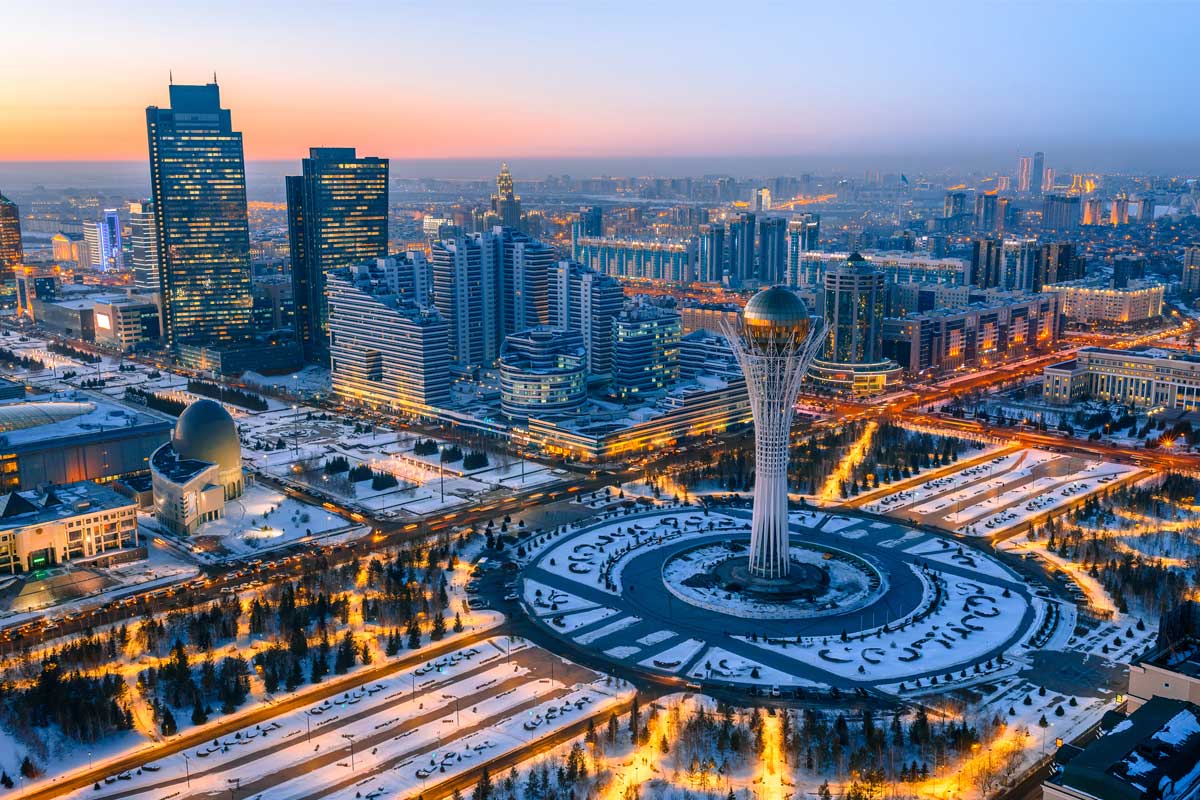
If you are visiting Kazakhstan for business purpose, be sure to also explore the cities, visit museums, and take short tours.
Business tourism is leisure activities in conjunction with business travel. Besides participating in conferences and signing contracts, people can visit tourist destinations. This industry is one of the most laborious among other types of tourism, as it requires tremendous responsibility and the ability to quickly analyze information.
Business tourism is quite popular in Kazakhstan, reinventing business trips and finding innovative ways to spend time left after business meetings. The capital, Nur-Sultan, has long been one of the largest and most popular international centers for business negotiations and major forums. By the way, the Republic of Kazakhstan has all the infrastructure necessary for business tourism. Therefore, not only the capital of the country, but many other major cities are actively used as platforms for official business trips, team building, corporate trainings, etc.



